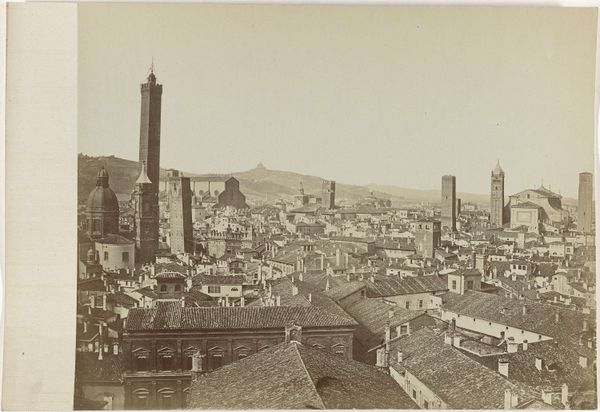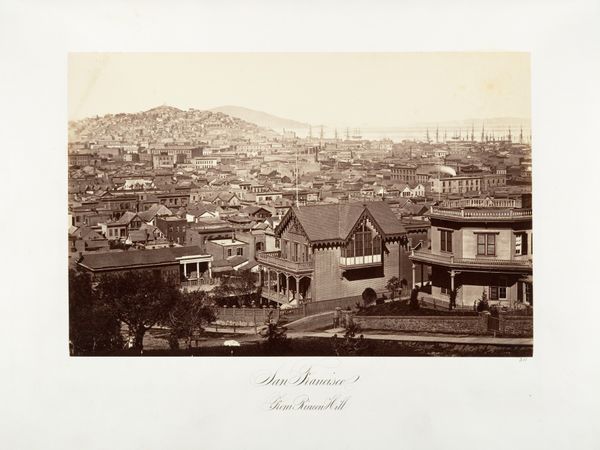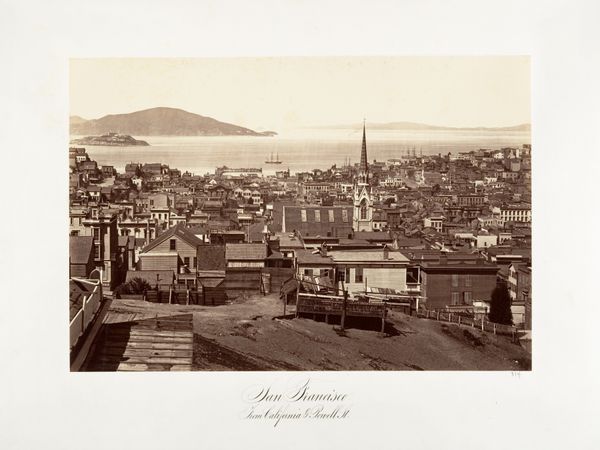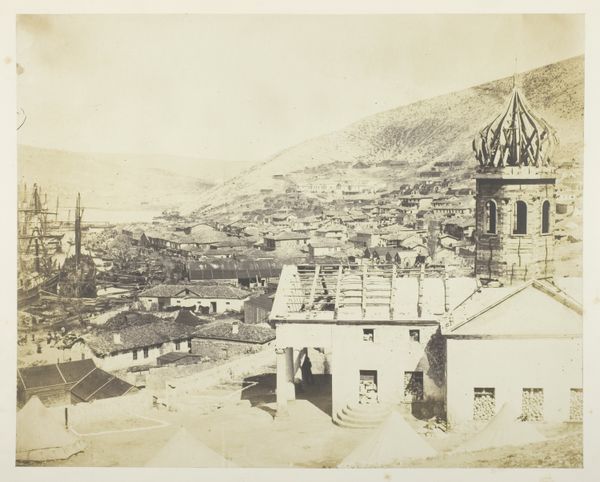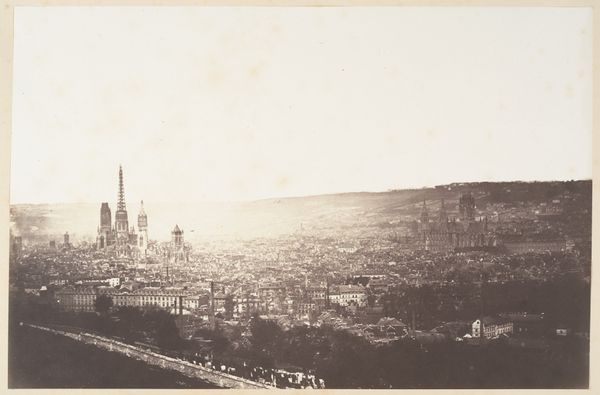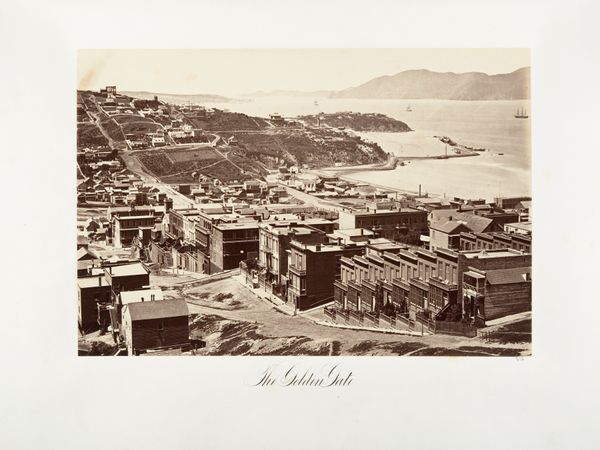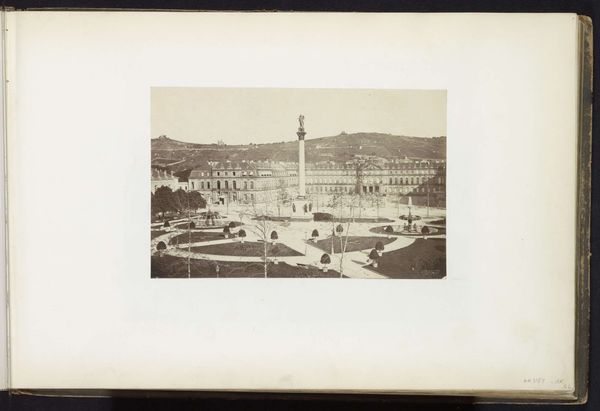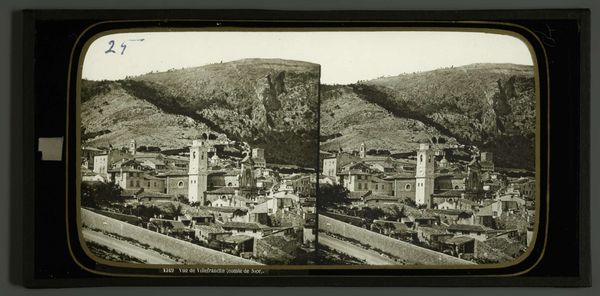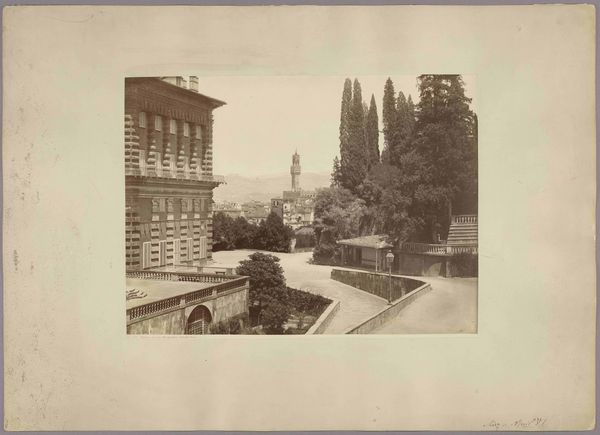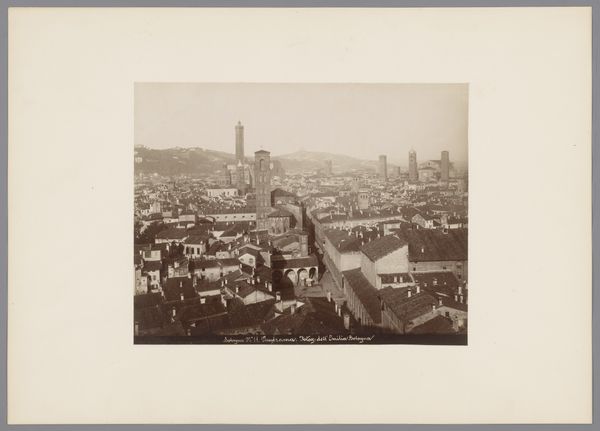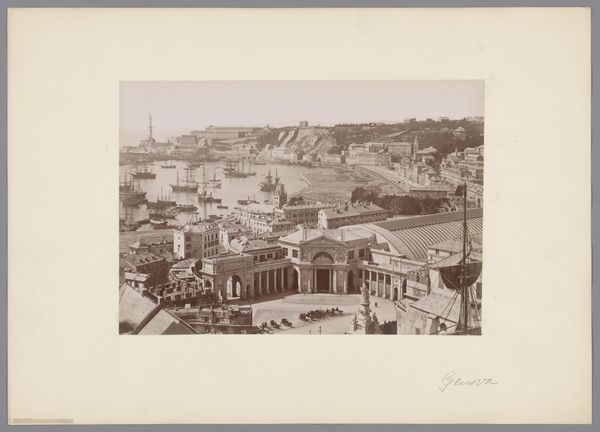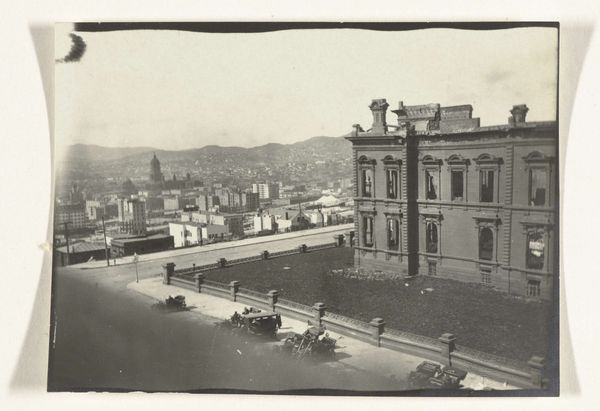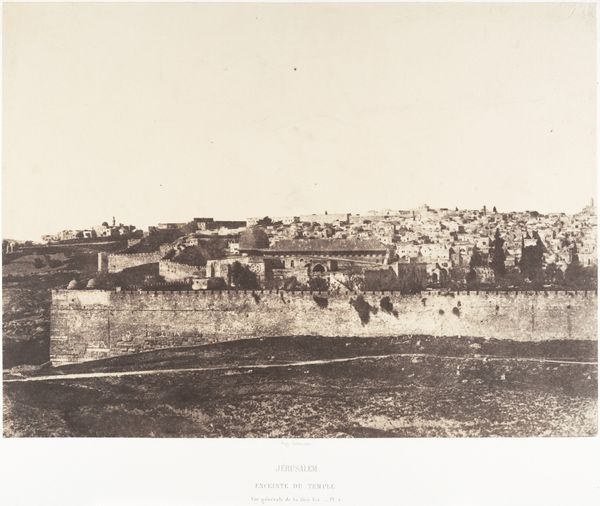
photography, albumen-print
#
landscape
#
street-photography
#
photography
#
hudson-river-school
#
cityscape
#
street
#
albumen-print
#
realism
Copyright: Public Domain
Curator: Carleton Watkins' "First Street, San Francisco," created around 1864, presents an albumen print that captures a key thoroughfare during the city's rapid expansion. Editor: The overwhelming sepia tone really strikes me first—it’s almost dreamlike, a sort of idealized memory of this bustling street. The eye is immediately drawn to the distant tower rising above the buildings, it almost anchors the entire image. Curator: Watkins made these large photographs as documents for investors. They wanted proof of how rapidly their money was transforming this space. The lack of human figures on this main street signifies more control over an uncontrollable situation. A subliminal tool in controlling investors' worries about funding development on an uncertain project. Editor: That tower has strong symbolic implications. Consider the way it punctuates the upward surge, reflecting the ambition and transformation underway in this young city and state. Towers represent power, enlightenment and reach between the divine and the earthly. Curator: It’s important to also view this in the context of Manifest Destiny. San Francisco represented a turning point where so many sought new opportunities and wealth on occupied land, dispossessing Indigenous people and Chinese migrant workers. It highlights tensions around identity, displacement, and the complex reality behind such rapid urbanization. Editor: Watkins’ image reveals deeper truths beyond boosterism and progress. The tower in the distance is not an emblem of hope, it serves as an inescapable reminder of how progress is invariably tethered to expansionist ideology and territorial incursion. The way Watkins used his camera, with an incredibly sharp and focused perspective is something to be lauded. Curator: I agree. Watkins’ work stands as a crucial historical document of a society in transition, but we can interpret its artistic, economic, and political context with the appropriate lens to recognize the complexity of its making. Editor: Indeed, considering Watkins’ use of potent cultural symbols we are made to re-assess not only how far we’ve advanced as a society, but the fundamental nature of progress itself.
Comments
No comments
Be the first to comment and join the conversation on the ultimate creative platform.
